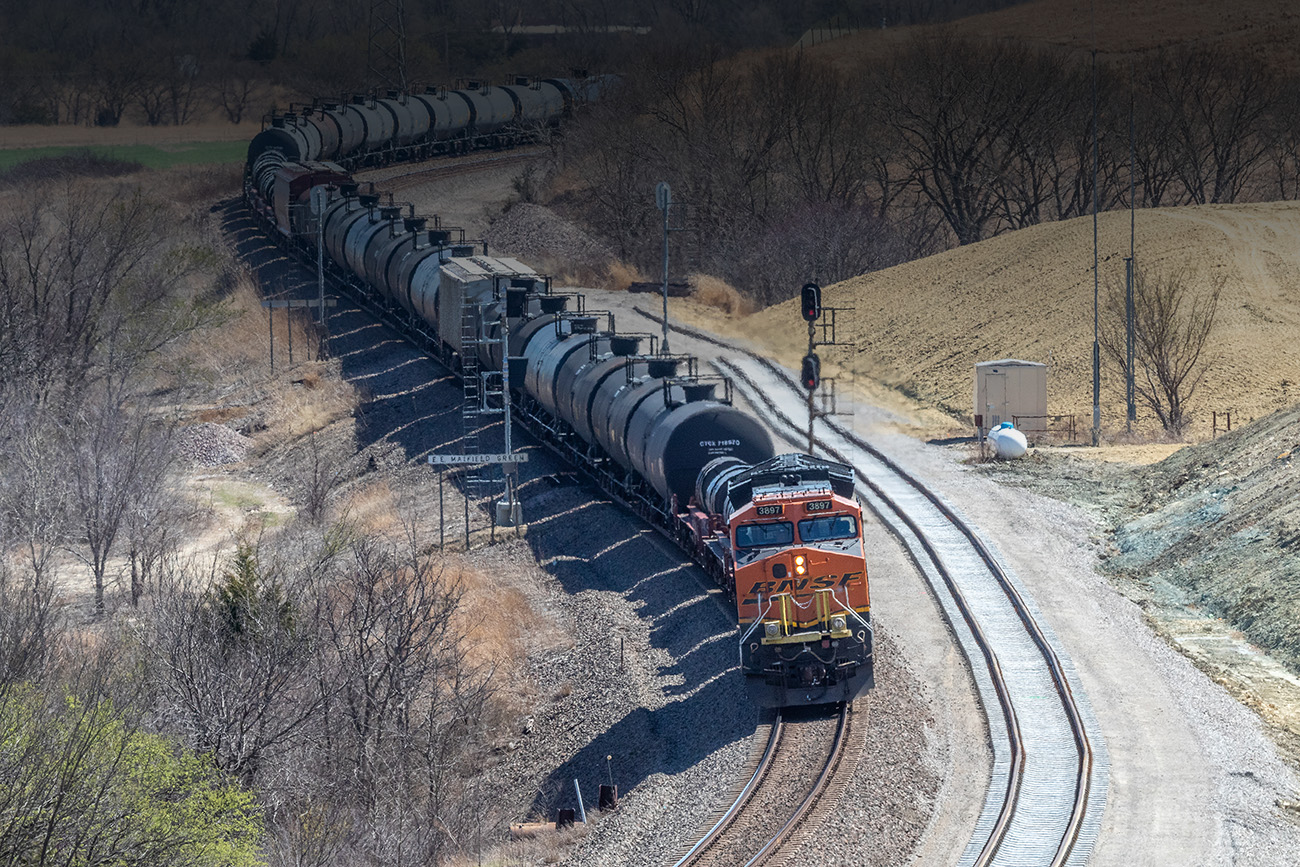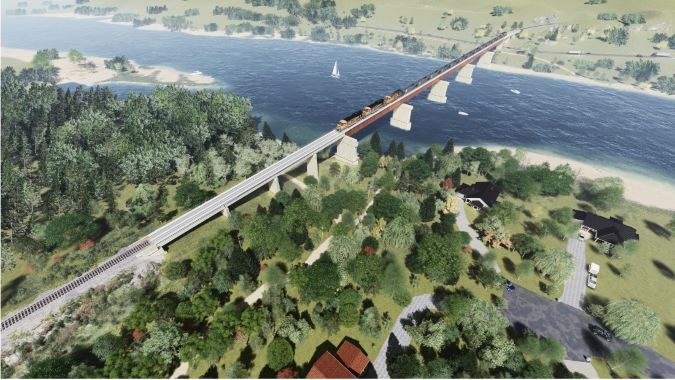
Bridging the future of rail in North Dakota
By PAIGE ROMANOWSKI
Staff Writer
Freight rail has been the backbone of North Dakota’s economy, with tracks laid here even before statehood. Though modernization and advancements have covered most of our network, a structure built by BNSF predecessor Northern Pacific Railway (NP) still crosses over the Missouri River, connecting the region to the rest of the country: the bridge between Bismarck and Mandan.
Though the NP had been moving through the state since 1871, the Missouri River posed a major obstacle. Freight was ferried across, which caused delays, and when the river froze in the winter months, temporary tracks over the ice were needed to proceed. The NP had to find a permanent solution, which led to the construction of the Bismarck-Mandan bridge.
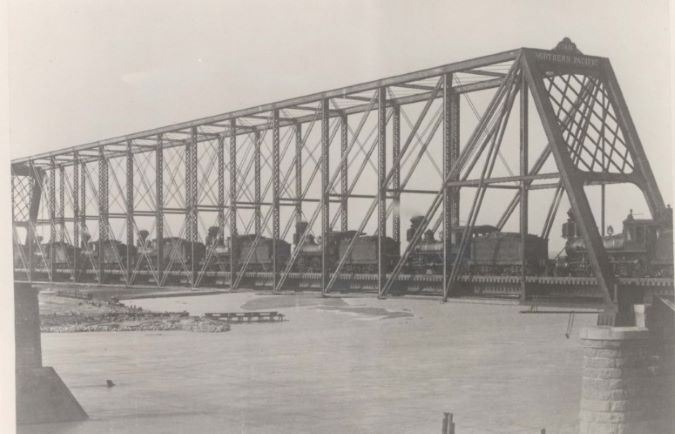
“Bridging” the past and the present, the 1,470-foot-long truss structure is a testament to the ingenuity of the engineers of the late 1800s and has long united Bismarck and Mandan. The granite piers are the only remaining original assets of the bridge. Now weathered by time and countless trains, they whisper tales of bygone eras, of steam and steel that fueled regional prosperity.
As the sun sets on the bridge’s 140-year career, a new chapter begins as the opportunity for improvement has come. Among the reasons for change: the current bridge’s vertical and horizontal clearances, and the approaching end of its life expectancy, limit our ability to transport certain loads.
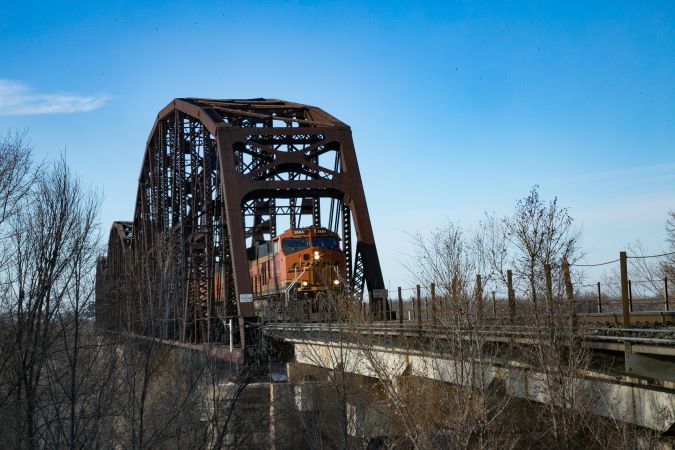
Next to the original bridge, a new single-track bridge will rise to support heavier freight to better meet the needs of our customers. Designed to last as long as its predecessor, the new bridge is equipped with a pier wide enough to accommodate a second track if later needed – which will limit the impact of future construction on the environment and the community.
“I grew up in Bismarck, so the bridge has been a big part of our history,” Shane O’keefe, project engineer, said. “The existing bridge has 400-foot spans, but it was decided that 200-foot spans were more appropriate.”
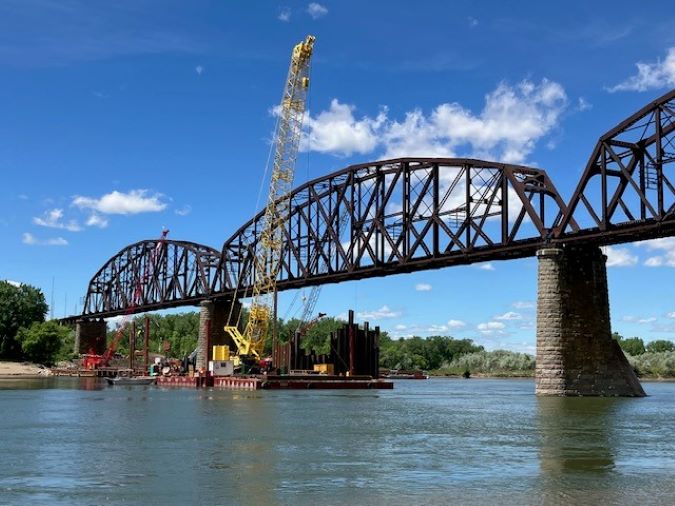
The Missouri River is not just an essential route for transportation, it’s a highway for water recreation. Recognizing the importance of the river for local mariners, the engineers made sure the smaller spans wouldn’t hinder recreation. The project also went through extensive review and approval by the U.S. Coast Guard for potential impacts to navigation and the environment.
Not only will the bridge promote more efficient freight movement and boast opportunity for expansion if needed, but it will improve our inspection process. Ensuring smooth and safe access for inspectors to monitor the bridge’s health through special access was at top of mind while creating the design.
“BNSF is committed to making capital investments to replace bridges across waterways as they approach the end of their useful life to ensure that we have safe and reliable structures for employees and the communities we operate in,” Mike Herzog, director of bridge construction, said.
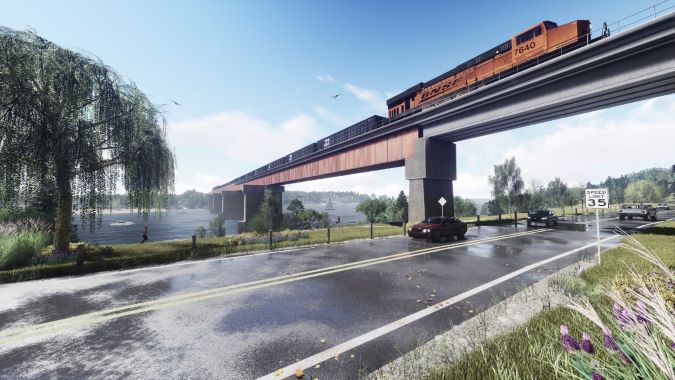
After obtaining all necessary permits and approvals, construction on the new bridge started in early 2023. Currently, crews are focused on the construction of the substructures connecting one side of the river to the other. That means building piers first so spans can later be positioned and track put in place. The western embankment, which will host the new track west of the river spans, should be completed by 2024.
Expected to be completed in the second quarter of 2026, the new bridge will replace the original bridge – but not without preserving pieces of this North Dakotan landmark. Portions of the original bridge were made available for the community to repurpose.
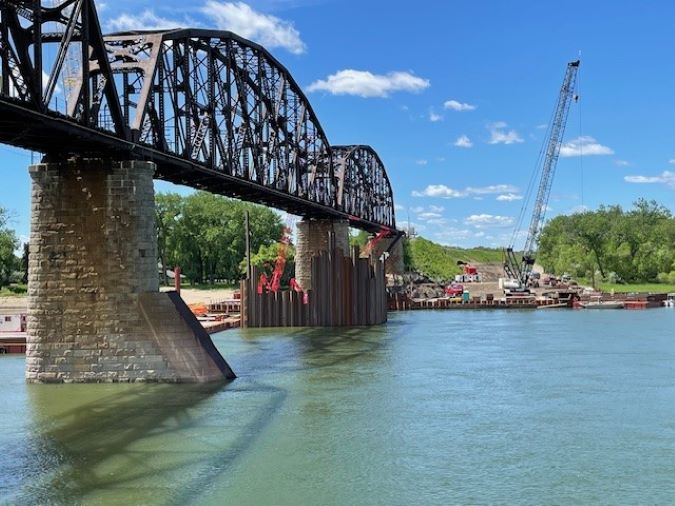
“It’s fitting that the city of Mandan will get its own keepsake to remind people of this piece of history,” Amy McBeth, general director public affairs, said. “We’ll be salvaging a number of granite blocks from the original piers so they can be used in a welcome feature for the community.”
Though this piece of North Dakota’s railroad heritage is saying farewell, we’re looking forward to the future of the new bridge and our continued safe service and operations.


